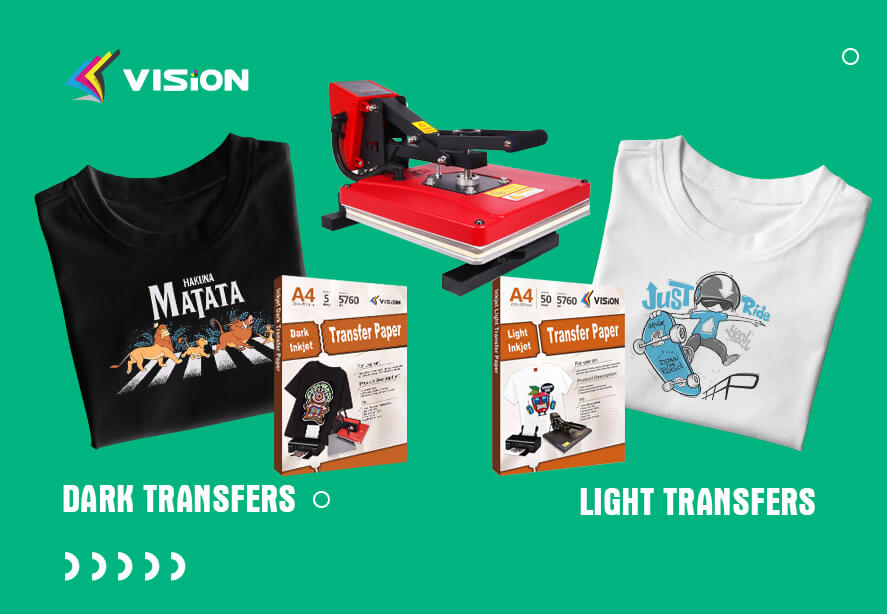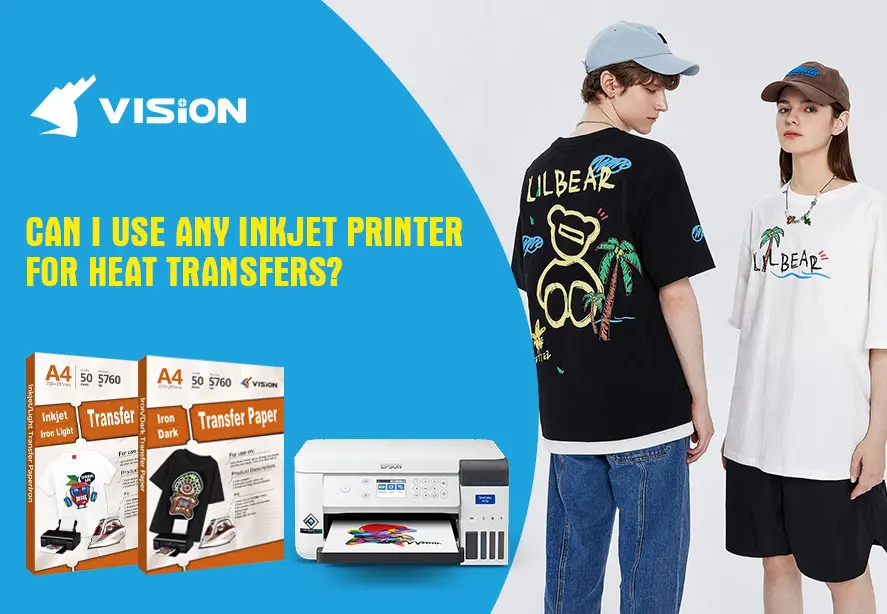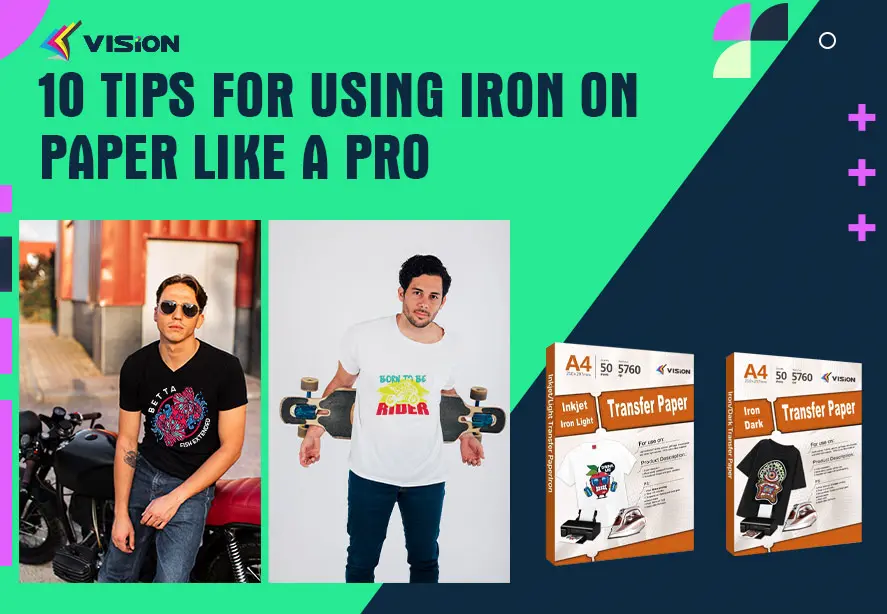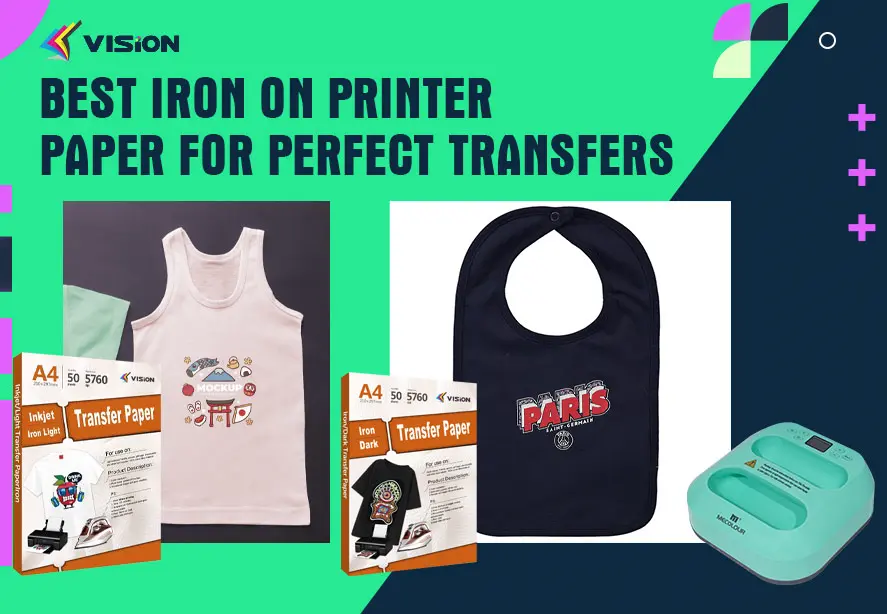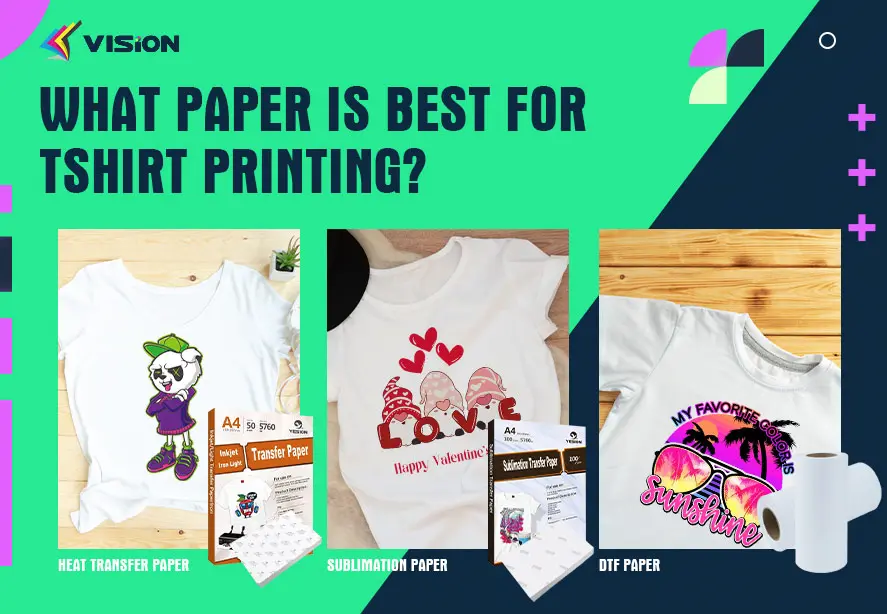The Difference: Iron-On Transfer Paper and Heat Transfer Paper
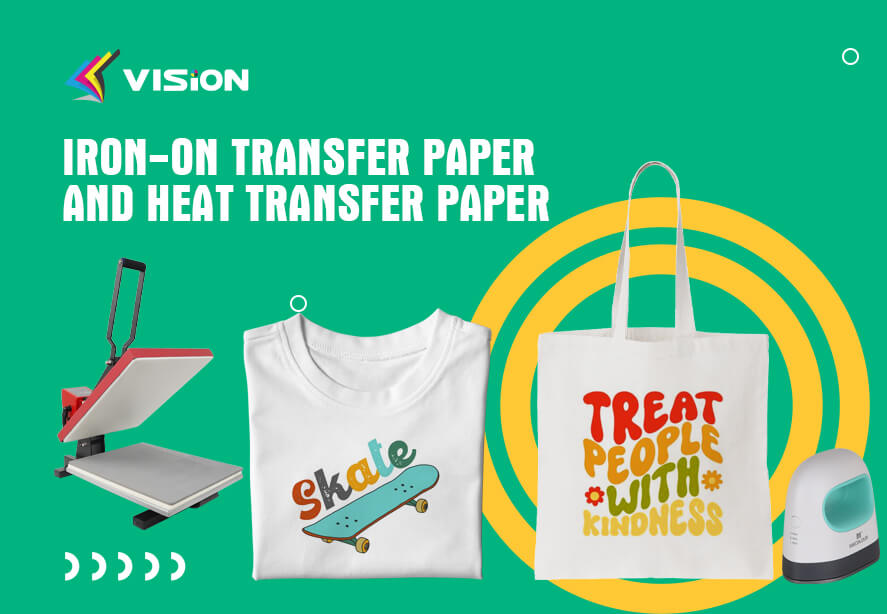
When it comes to adding personalized designs to fabrics and various surfaces, both iron-on transfer paper and heat transfer paper play crucial roles, each with its own characteristics and applications. Let’s explore the differences between these two terms:
Iron-On Transfer Paper
Iron-on transfer paper is a type of transfer material that is designed to be used with a household iron to transfer a design onto fabric. It typically consists of a sheet of paper with a heat-sensitive adhesive on one side and a printable coating on the other. The process involves printing your design onto the coated side of the paper using an inkjet printer, cutting out the design if needed, and then using an iron to apply heat and pressure to transfer the design onto fabric.
Two types of Iron-On Transfer Paper for fabrics
For Dark Fabrics:
Iron-on transfer paper for dark fabrics is specifically designed to allow vibrant and opaque designs to be transferred onto dark-colored fabrics. It features a white backing that ensures the design’s colors stand out vividly against the fabric’s background.
For Light Fabrics:
Iron-on transfer paper for light fabrics is tailored for transferring designs onto light-colored textiles. It doesn’t require a white backing, as the colors of the design are intended to be visible on the fabric without interference from the background color.
Related:
Iron on transfer paper for dark fabric
A Comprehensive Guide to Iron-on Paper for Shirts: Light vs Dark Transfers
Heat Transfer Paper
Heat transfer paper is a broader term that encompasses a range of transfer materials designed to be used with heat press machines, which are specialized devices used for applying heat and pressure to transfer designs onto various surfaces. Heat transfer paper can include sublimation paper, PVC-based heat transfer sheets, and other specialized papers for specific applications.
Two types of Heat Transfer Paper for fabrics
Dark Transfers:
Heat transfer paper for dark fabric is optimized for applying designs onto dark-colored surfaces. It often involves a more intricate process, where a layer of white ink is first printed onto the transfer paper before the actual design. This white layer serves as a base to ensure the design’s colors remain vibrant and true when applied to the dark surface.
Light Transfers:
Heat transfer paper for light fabric is used when applying designs onto light-colored surfaces. Since there’s no need for a white base layer, the process is relatively simpler compared to dark transfers.
Key Differences of Iron-On Transfer Paper and Heat Transfer Paper
Application Method:
Iron-on transfer paper is primarily intended for use with a household iron, making it suitable for DIY projects at home. It requires manual pressure and heat from an iron to transfer the design onto fabric.
Heat transfer paper, on the other hand, is often used with heat press machines, which provide consistent heat and pressure. This method is commonly used for more professional and commercial applications.
Surface Compatibility:
Iron-on transfer paper is typically used for fabric and textiles, such as T-shirts, tote bags, and pillowcases.
Heat transfer paper can have a broader range of applications and may be suitable for various surfaces, including fabric, ceramics, metal, and more.
Complexity and Precision:
Iron-on transfer paper is generally simpler to use, making it a popular choice for beginners and home crafters. However, it may have limitations in terms of image quality and durability.
Heat transfer paper used with a heat press allows for greater precision, consistent results, and the ability to handle more intricate and complex designs.
Durability and Washability:
Heat transfer paper, especially when used with a heat press, tends to provide more durable and long-lasting results compared to iron-on transfer paper.
Iron-on transfers may have varying levels of durability and washability, depending on the brand and quality of the paper.
Understanding the differences between iron-on transfer paper and heat transfer paper, whether for dark or light applications, empowers DIY enthusiasts and crafters to choose the right method for their specific projects. Both options provide unique benefits, catering to a wide array of design preferences and surface types. Whether creating personalized clothing, decorative items, or promotional materials, the choice between these transfer papers can significantly impact the final outcome.
Related:
The Best Iron-On Transfer Paper for Any Crafting Project



